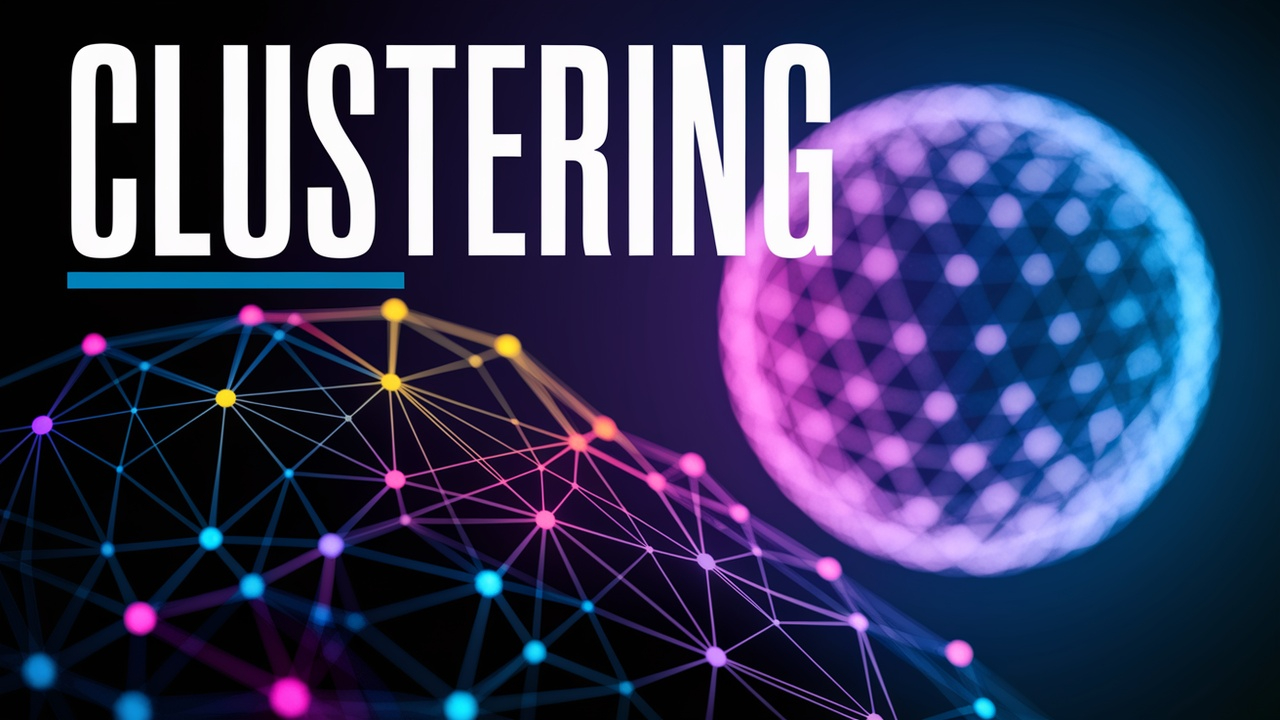
This comprehensive course on clustering techniques provides an in-depth exploration of K-Means and DBSCAN algorithms. Participants will learn the theoretical foundations, practical applications, and implementation strategies of these essential clustering methods in data science.
Course Levels
-
Level 1: Introduction to Clustering
This level introduces the concept of clustering, its importance in data analysis, and basic terminologies.
-
Level 2: Understanding K-Means Clustering
This level delves into the K-Means clustering algorithm, covering its mechanics and applications.
-
Level 3: Implementing K-Means Clustering
Learn how to implement the K-Means algorithm using popular programming libraries.
-
Level 4: Challenges and Limitations of K-Means
Explore the limitations of K-Means clustering and strategies to overcome them.
-
Level 5: Introduction to Density-Based Clustering
This level introduces density-based clustering, focusing on the DBSCAN algorithm.
-
Level 6: Implementing DBSCAN
Learn how to implement the DBSCAN algorithm using Python libraries.
-
Level 7: Advantages and Limitations of DBSCAN
Explore the advantages and limitations of the DBSCAN algorithm in comparison to K-Means.
-
Level 8: Advanced Clustering Techniques
This level explores advanced clustering techniques and their applications, building on the knowledge of K-Means and DBSCAN.
-
Level 9: Real-World Applications of Clustering
Examine real-world applications of clustering algorithms in various fields.
-
Level 10: Course Wrap-Up and Future Directions
Conclude the course with a summary of key learnings and discuss future trends in clustering.
Course Topics
-
Key Concepts: Centroids, Distance Metrics
# Key Concepts: Centroids, Distance Metrics Clustering is a fundamental technique in unsupervised machine learning where the goal is to group similar data points together. Two essential concepts in c...
-
Overview of DBSCAN Algorithm
# Overview of DBSCAN Algorithm DBSCAN (Density-Based Spatial Clustering of Applications with Noise) is a popular clustering algorithm that identifies clusters in spatial data based on density. Unlike...
-
DBSCAN's Limitations in High-Dimensional Spaces
# DBSCAN's Limitations in High-Dimensional Spaces DBSCAN (Density-Based Spatial Clustering of Applications with Noise) is a popular clustering algorithm that can identify clusters of varying shapes a...
-
Implementing DBSCAN in Python
# Implementing DBSCAN in Python DBSCAN (Density-Based Spatial Clustering of Applications with Noise) is a powerful clustering algorithm that can identify clusters of varying shapes and sizes in a dat...
-
Data Preprocessing for K-Means
# Data Preprocessing for K-Means Data preprocessing is a crucial step in the K-Means clustering algorithm. Proper preprocessing can significantly impact the performance and results of the clustering ...
-
Applications of Clustering
# Applications of Clustering Clustering is a powerful technique in data analysis that groups similar data points together. It is widely used across various domains for different applications. In this...
-
K-Means and Non-Spherical Clusters
# K-Means and Non-Spherical Clusters K-Means is a popular clustering algorithm that partitions data into K distinct, non-overlapping subsets (clusters). While it performs exceptionally well with sphe...
-
Review of Key Concepts
# Review of Key Concepts In this wrap-up section, we will revisit the core concepts of clustering techniques, specifically focusing on K-Means and DBSCAN. Understanding these concepts is crucial as t...
-
Combining K-Means and DBSCAN
# Combining K-Means and DBSCAN ## Introduction In the realm of clustering techniques, both K-Means and DBSCAN have their unique strengths and limitations. K-Means excels in partitioning spherical clu...
-
What is Density-Based Clustering?
# What is Density-Based Clustering? Density-Based Clustering is a powerful clustering technique that identifies groups (clusters) of data points which are closely packed together, while marking point...
-
Setting Up the Environment
# Setting Up the Environment In order to effectively implement K-Means clustering, it's essential to have a well-configured environment. This topic will guide you through the necessary steps to set u...
-
Setting Up for DBSCAN
# Setting Up for DBSCAN DBSCAN (Density-Based Spatial Clustering of Applications with Noise) is a powerful clustering algorithm that is particularly effective for identifying clusters of varying shap...
-
Key Parameters: Epsilon and MinPts
# Key Parameters: Epsilon and MinPts Density-Based Spatial Clustering of Applications with Noise (DBSCAN) is one of the most popular clustering techniques due to its ability to identify clusters of a...
-
Choosing the Right Distance Metric
# Choosing the Right Distance Metric In the context of clustering techniques like K-Means and DBSCAN, the choice of distance metric is crucial. The distance metric determines how similarity or dissim...
-
Comparative Analysis of Clustering Techniques
# Comparative Analysis of Clustering Techniques In the field of data mining and machine learning, clustering is a critical task that involves grouping a set of objects in such a way that objects in t...
-
Handling Noise and Outliers
# Handling Noise and Outliers in DBSCAN ## Introduction Noise and outliers are common challenges in data clustering, particularly when using techniques like DBSCAN (Density-Based Spatial Clustering o...
-
Evaluating K-Means Performance
# Evaluating K-Means Performance K-Means clustering is a popular unsupervised learning algorithm used to partition a dataset into distinct groups based on feature similarity. However, determining how...
-
Types of Clustering Algorithms
# Types of Clustering Algorithms Clustering is a fundamental technique in data analysis, used to group similar data points together. There are various clustering algorithms, each with its strengths a...
-
Sensitivity to Outliers
# Sensitivity to Outliers in K-Means Clustering ## Introduction K-Means clustering is a popular technique used in various fields for grouping data points based on their similarities. However, one of ...
-
Image Segmentation
# Image Segmentation Image segmentation is a crucial technique in computer vision that involves partitioning an image into multiple segments (sets of pixels) to simplify or change the representation ...
- And 20 more topics...